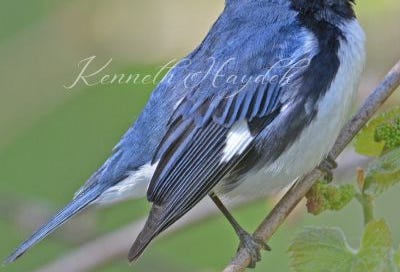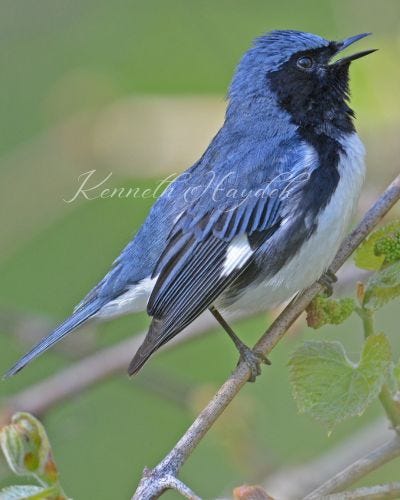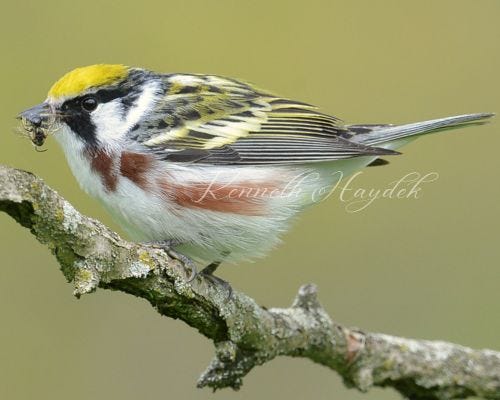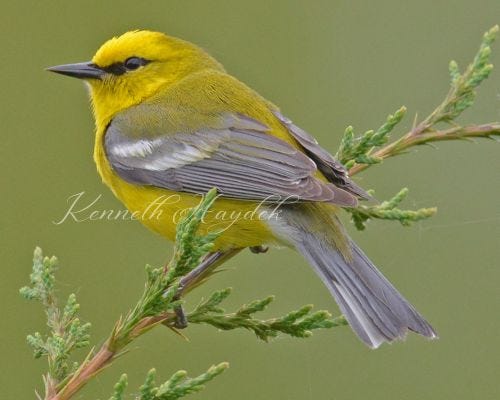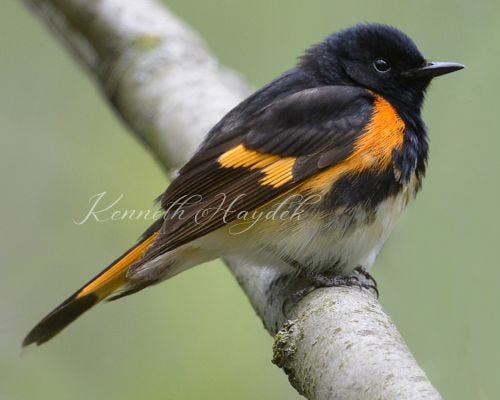July: Warblers
Last month, we waded deep in the long grasses of the Great Plains to catch a glimpse of the greater prairie-chicken. This month, we’re wondering about warblers.
What does it mean to warble? Merriam-Webster Dictionary defines the verb as “to sing in a trilling manner or with many turns and variations,” and when used as a noun, a warble denotes “a melodious succession of low pleasing sounds.”
For birds, then, the name “warbler” does not designate one particular kind of bird but rather any one of literally hundreds of species of perching songbirds that may share only a few common characteristics such as being small in stature, insect-eating, and mellifluous.
Because warblers eat mainly insects, they are not likely to visit your backyard feeder. As such, you will need to look for them in wooded areas—many warbler species will be darting in tree branches high in the canopy, while others may be closer to the ground or rummaging around on the forest floor.
Presented here are just four of many possible warblers that you may spot while going for a hike on your favorite tree-lined trail, if your timing is right and your eye is quick!
These photos come courtesy of lifelong birder Kenneth Haydek, whose pictures have dazzled these Bird of the Month posts and who has been too modest to accept more than a photo credit, but since pictures say a thousand words, I think he deserves more than only a caption. Thanks, Ken.
Black-Throated Blue Warbler
The black-throated blue warbler is a plump little bird who breeds in northeastern regions of the United States and winters in the Caribbean. The male black-throated blue warbler looks much like name suggests: dark blue head, black throat, and white breast. The female is strikingly different in appearance, covered with olive-gray feathers with some bluish tints. The only giveaway from their appearance that the males and females are related is a white check mark (or “pocket handkerchief”) on their wings.
Black-throated blue warblers may be found in shrubby areas of forest understories and are less skittish than many other warbler species, often letting passersby approach at a comfortable distance for a closer listen to their song. And while black-throated blue warblers do eat insects (they are even known to steal prey from spider webs), they also eat seeds, small fruits, and flower nectar, and have been spotted drinking sugar water from hummingbird feeders.
Chestnut-Sided Warbler
During breeding season, the chestnut-sided warbler is capped with yellow, with black triangles around their eyes, a stripe of chestnut on their sides, surround by white, gray, and yellow feathers. Females are more modestly colored than males. In nonbreeding season, both males and females lose the black around their eyes, and their yellow feathers turn to a warm lime. For habitats, the chestnut-sided warbler prefers young deciduous saplings and shrubs. They tend to make their home in secondary forests, that is, forests that have been previously wiped out for any number of reasons (fires, logging, etc.), and live among the regrowing vegetation. Because of their preference for young growth, they typically won’t revisit the same area for longer than a decade.
Chestnut-sided warblers winter in Central America, in shade-grown coffee plantations and the edges of tropical forests. Breeding season brings them as far north as southeastern Canada and the northeastern and Great Lakes regions of the United States. Males have two possible songs, one with an accent at the end (often described as a friendly “very, very pleased to meetcha!” kind of greeting), and the other without the flourish at the end. Males who successfully serenade females with both kinds of songs, and especially the accented song, are more likely to find mates.
Blue-Winged Warbler
The blue-winged warbler is predominately yellow with bluish-gray wings, two white wing bars, white undertails, pointy black beaks, and thin black eyelines. Females have less bold eyelines than males. During breeding season in central and eastern United States, they find their homes in shrubby areas like forest edges and brushy fields—or even bushy parks and gardens. They spend their winters in the Caribbean and along the east coast of the Yucatan Peninsula.
Their “bee buzz” song is perhaps a most fitting sound coming from this insect-loving bird, and they will go to great lengths—even to the point of hanging upside down from branches—to ferret out and snatch their prey.
American Redstart
The American redstart is a fidgety flitting flighty warbler who can catch insects mid-air and who often fan their tails as if to show off their brilliant colors—or to startle their prey out of hiding. Adult males are black, except for bright orange patches on their sides, wings, and tails and sing a high-pitched song. Immature males are gray with splotches of black and yellow patches instead of orange. Females are gray/gray-olive with yellow patches instead of orange.
American redstarts are populous across North America. American redstarts that breed in western Canada on the central U.S. may winter in Mexico, while American redstarts that breed in southeastern Canada/northeastern U.S. may winter in Florida or the Caribbean. American redstarts congregate in woodlands and like to be near water, so you may have more success seeking them out in wooded areas near rivers, streams, and ponds. However, in the summer, they tend to acquire the taste for fruit, and can be found munching on small berries in backyard magnolias or serviceberry shrubs.
Coming to Woodlands Near You
When you will find a warbler near you? Check out eBird bird tracking platform, managed by the Cornell Lab of Ornithology, which compiles bird sighting data of birders worldwide. You can monitor sightings by species or region to anticipate when migratory birds, such as warblers, will be arriving in your neck of the woods.
Sources:
https://www.merriam-webster.com/dictionary/warble
https://www.britannica.com/animal/warbler
https://en.wikipedia.org/wiki/Warbler
https://abcbirds.org/bird/black-throated-blue-warbler/
https://ebird.org/species/btbwar
https://www.audubon.org/field-guide/bird/black-throated-blue-warbler
https://www.allaboutbirds.org/guide/Black-throated_Blue_Warbler/id
https://www.allaboutbirds.org/guide/Chestnut-sided_Warbler/id
https://www.audubon.org/field-guide/bird/chestnut-sided-warbler
https://en.wikipedia.org/wiki/Chestnut-sided_warbler
https://abcbirds.org/bird/chestnut-sided-warbler/
https://www.bird-sounds.net/chestnut-sided-warbler/
https://www.allaboutbirds.org/guide/Blue-winged_Warbler/id
https://www.audubon.org/field-guide/bird/blue-winged-warbler
https://abcbirds.org/bird/blue-winged-warbler/
https://en.wikipedia.org/wiki/Blue-winged_warbler
https://www.allaboutbirds.org/guide/American_Redstart/id
https://www.audubon.org/field-guide/bird/american-redstart
https://en.wikipedia.org/wiki/American_redstart
https://abcbirds.org/bird/american-redstart/#region-range

